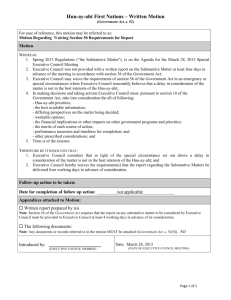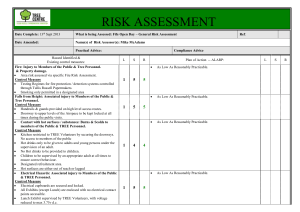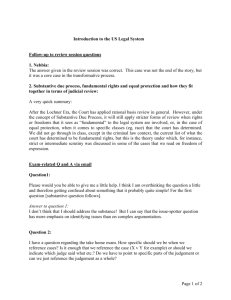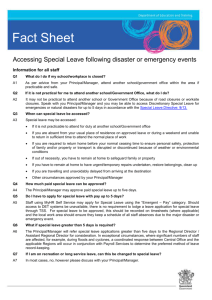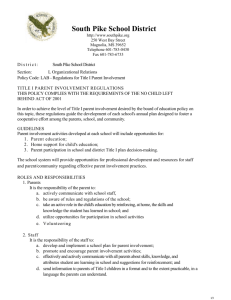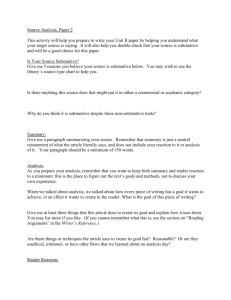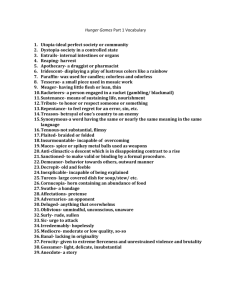Course of Action following Independent Medical Examinations
advertisement
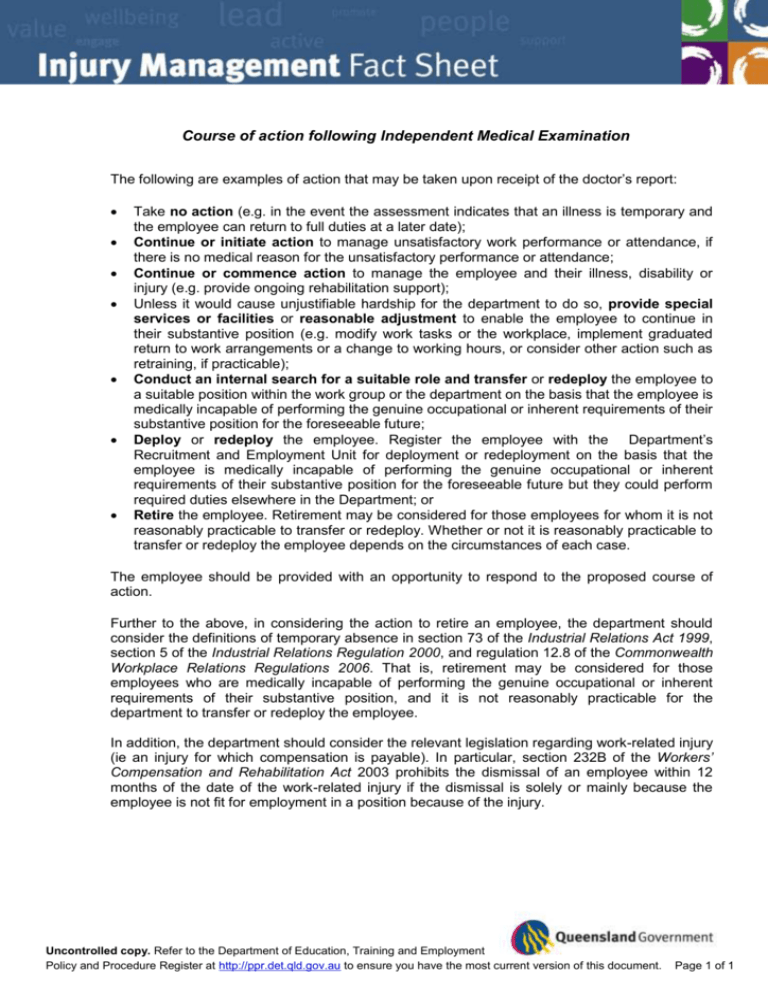
Course of action following Independent Medical Examination The following are examples of action that may be taken upon receipt of the doctor’s report: Take no action (e.g. in the event the assessment indicates that an illness is temporary and the employee can return to full duties at a later date); Continue or initiate action to manage unsatisfactory work performance or attendance, if there is no medical reason for the unsatisfactory performance or attendance; Continue or commence action to manage the employee and their illness, disability or injury (e.g. provide ongoing rehabilitation support); Unless it would cause unjustifiable hardship for the department to do so, provide special services or facilities or reasonable adjustment to enable the employee to continue in their substantive position (e.g. modify work tasks or the workplace, implement graduated return to work arrangements or a change to working hours, or consider other action such as retraining, if practicable); Conduct an internal search for a suitable role and transfer or redeploy the employee to a suitable position within the work group or the department on the basis that the employee is medically incapable of performing the genuine occupational or inherent requirements of their substantive position for the foreseeable future; Deploy or redeploy the employee. Register the employee with the Department’s Recruitment and Employment Unit for deployment or redeployment on the basis that the employee is medically incapable of performing the genuine occupational or inherent requirements of their substantive position for the foreseeable future but they could perform required duties elsewhere in the Department; or Retire the employee. Retirement may be considered for those employees for whom it is not reasonably practicable to transfer or redeploy. Whether or not it is reasonably practicable to transfer or redeploy the employee depends on the circumstances of each case. The employee should be provided with an opportunity to respond to the proposed course of action. Further to the above, in considering the action to retire an employee, the department should consider the definitions of temporary absence in section 73 of the Industrial Relations Act 1999, section 5 of the Industrial Relations Regulation 2000, and regulation 12.8 of the Commonwealth Workplace Relations Regulations 2006. That is, retirement may be considered for those employees who are medically incapable of performing the genuine occupational or inherent requirements of their substantive position, and it is not reasonably practicable for the department to transfer or redeploy the employee. In addition, the department should consider the relevant legislation regarding work-related injury (ie an injury for which compensation is payable). In particular, section 232B of the Workers’ Compensation and Rehabilitation Act 2003 prohibits the dismissal of an employee within 12 months of the date of the work-related injury if the dismissal is solely or mainly because the employee is not fit for employment in a position because of the injury. Uncontrolled copy. Refer to the Department of Education, Training and Employment Policy and Procedure Register at http://ppr.det.qld.gov.au to ensure you have the most current version of this document. Page 1 of 1
